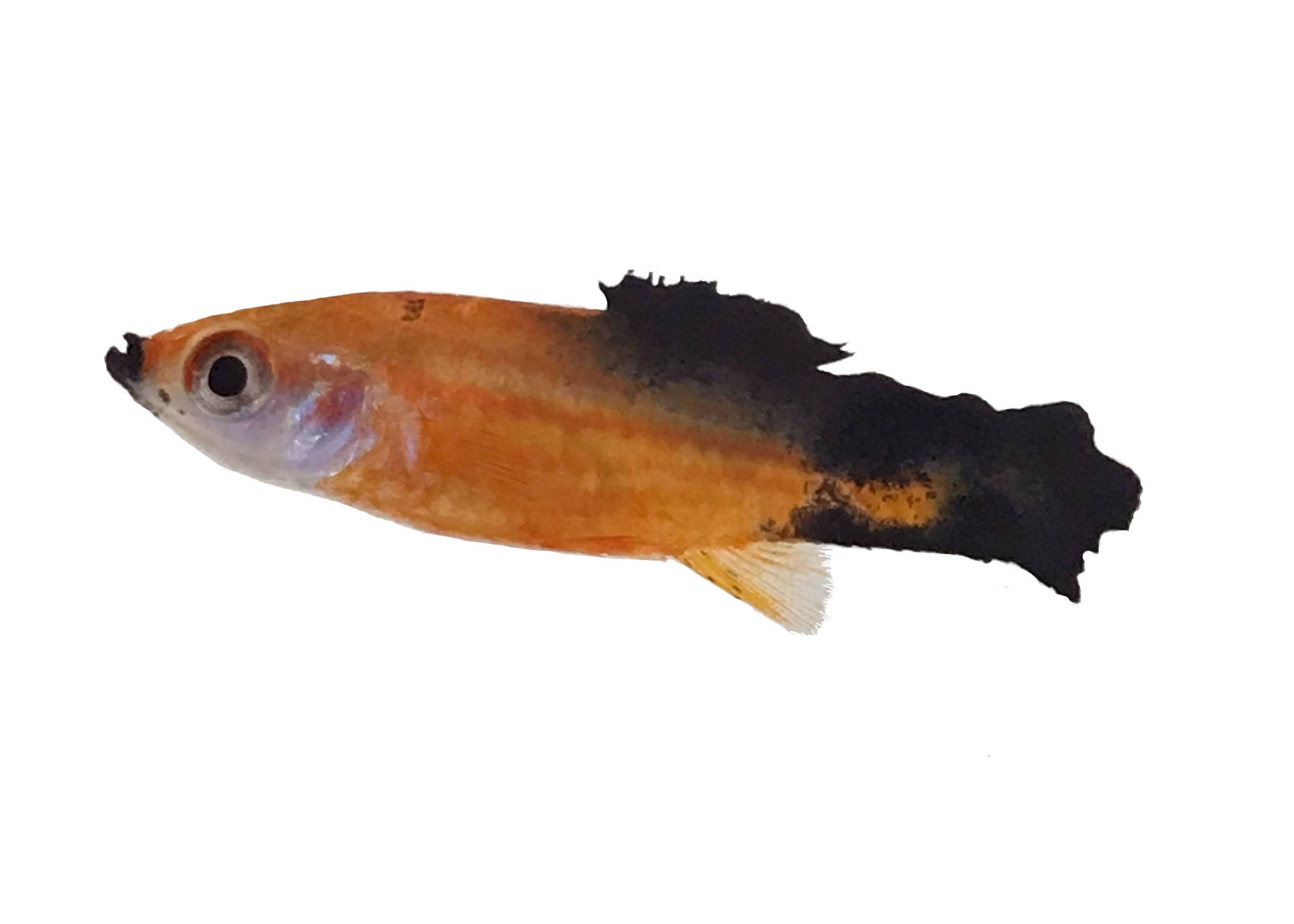Texas State researchers identify long-sought cancer gene in hybrid fish
Jayme Blaschke | November 9, 2020

New research conducted in part at the Xiphophorus Genetic Stock Center at Texas State has identified a long-sought gene in laboratory fish that provides new insight into cancer formation as well as speciation.
The finding stemmed from a long-running program hybridizing the southern platyfish Xiphophorus maculatus and the green swordtail Xiphophorus hellerii. Because of genetic incompatibility, select hybrid offspring develop cancer and are valuable as a key model system for cancer research and studying the evolutionary genetics of hybridization. The incompatible genes that lead to the cancer development in the southern platyfish—known as egfr—has long been known, but the counterpart, known as R(Diff) was unclear until now.
The study was led by Texas State's Yuan Lu, co-principal investigator for the Xiphophorus Genetic Stock Center. Other members of the research team are Angel Sandoval, Sarah Voss, Will Boswell, Mikki Boswell, Markita Savage and Ronald Walter of the Xiphophorus Genetic Stock Center, Manfred Schartl of the University of Würzburg, Würzburg, Germany, who has recently joined the Xiphophorus center, Susanne Kneitz of the University of Würzburg, Würzburg, Germany, Zhao Lai and Christi Walter of UT Health San Antonio, and Wes Warren of the University of Missouri, Columbia, Mo.
Their research, "Oncogenic allelic interaction in Xiphophorus highlights hybrid incompatibility," is published in the journal Proceedings of the National Academy of Sciences (PNAS) (https://www.pnas.org/content/early/recent).
The egfr found in platyfish is a mutant form that drives tumor formation—an oncogene, Lu explained. Yet egfr does not normally trigger tumors in platyfish because the species has co-evolved tumor regulators, a defense that hybridization with swordtails cripples. Particularly intriguing for researchers is the fact that the platyfish egfr is similar to a form of egfr that has been known as a driving oncogene for human cancer for more than 40 years.
"We know egfr is a driver of cancer formation, but we still don't fully understand how egfr regulates the downstream proliferation pathways and induces a tumor," Lu said. "So what is beautiful about the platyfish is that they have a mutant egfr that is just like some of the oncogenic versions of human egfr, but don't develop tumors. In the hybrid with certain fish, you have the egfr oncogene but not the tumor suppressor. Then the egfr can go off the rails and start inducing the uncontrolled proliferation of, in this case, the melanocyte.
"The platyfish have a naturally developed mechanism blocking the egfr. When we figure out this mechanism, we can utilize it for whatever therapy—small molecule or gene therapy development. What this tumor suppressor is doing to the egfr is exactly what we need to know to design the next generation of therapeutics targeting egfr in humans," he said. "That's the long-term impact of this model after we've identified the genes that negatively interact with each other and induce tumorigenesis."
Beyond the immediate value to cancer research, the discovery of the gene has broader implications for the study of evolutionary biology. When two populations sharing a common ancestor diverge into separate species, each adapted to distinct environments, an array of mechanisms have been proposed to explain how they retain their unique genetic identity. Much research into closely related species hybridization has focused on hybrid inviability and infertility in the resulting offspring. A well-known example of this is the mule, an infertile offspring resulting from the making of a male donkey with a female horse. Likewise, relatively small genetic incompatibilities can create disruptions that predispose hybrids to abnormalities and disease that decrease the overall fitness of the hybrids. Lu's discovery shows that a genetic susceptibility to cancers fits into this model and can serve to suppress the viability of hybrid offspring in areas where closely related species' natural ranges overlap.
"Evolution wise, people are talking about hybrid infertility reinforcing speciation," Lu said. "Using Xiphophorous, we just showed that tumorigenesis is another mechanism establishing the species barrier."
Share this article
For more information, contact University Communications:Jayme Blaschke, 512-245-2555 Sandy Pantlik, 512-245-2922 |